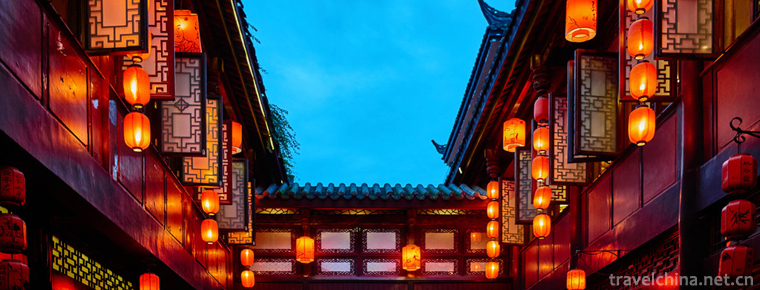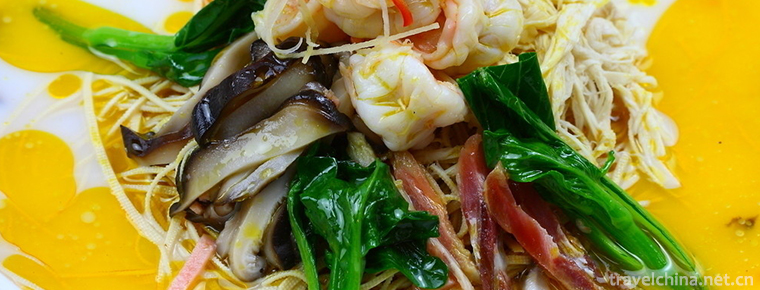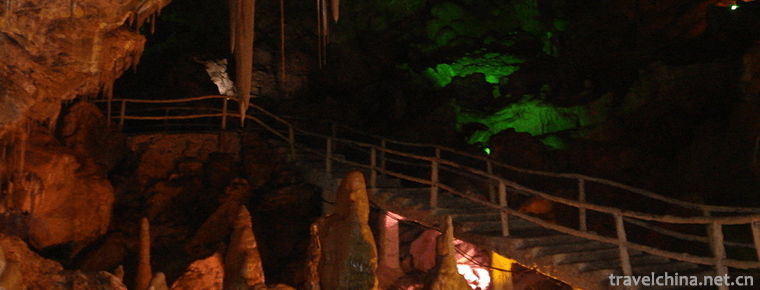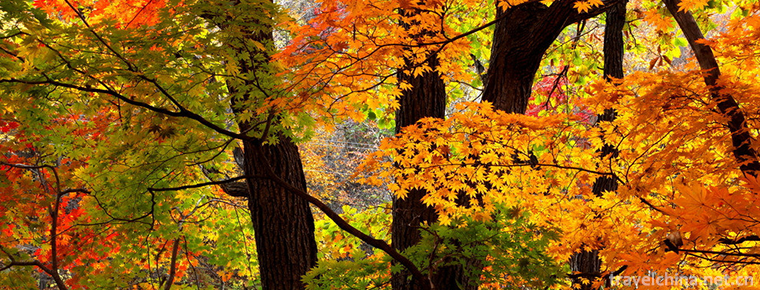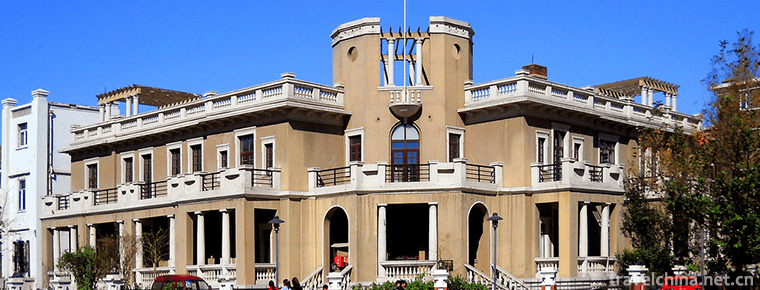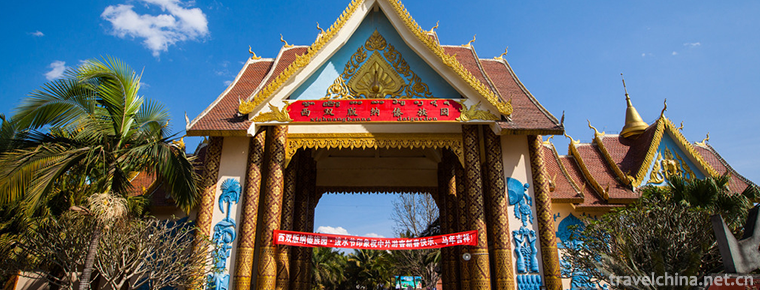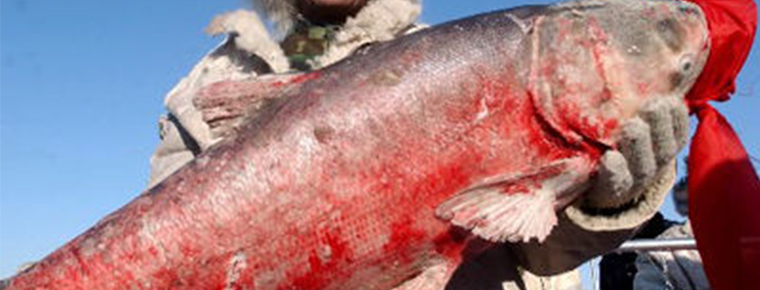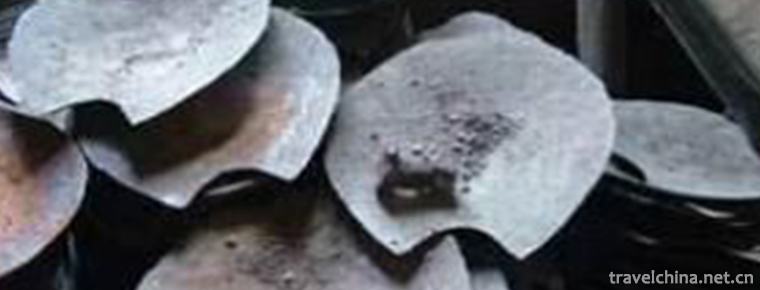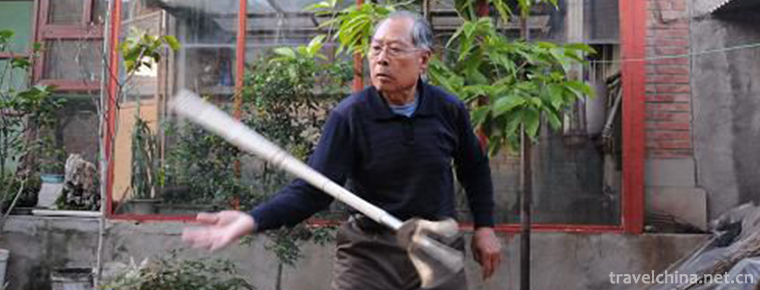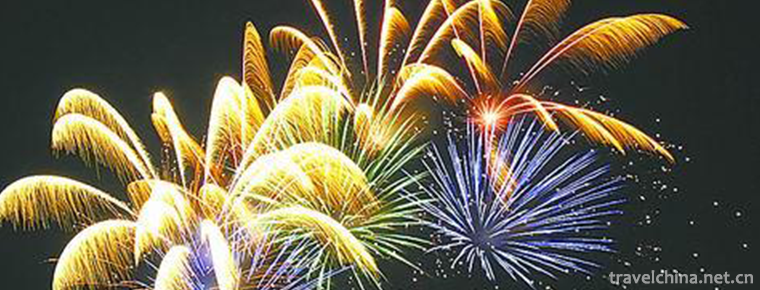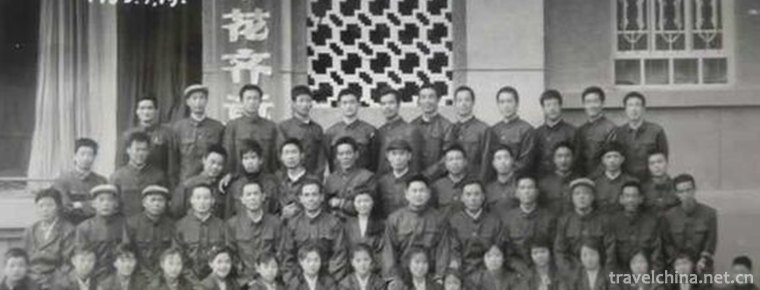Three Lanes and Seven Alleys
Three Lanes and Seven Alleys(Sanfang Qixiang) is a national 5A tourist attraction, which is the only remaining part of the old city of Fuzhou after the demolition and construction after the founding of the People's Republic. It is the historical and cultural root of Fuzhou.
Since the formation of Jin and Tang Dynasty, Sanfang Qixiang has been the habitat of nobles and scholar-bureaucrats. From the Qing Dynasty to the Republic of China, it has become a glorious place. There are about 270 ancient dwellings in the area, 159 of which are listed as protected buildings. The ancient buildings of Sanfang and Qixiang, represented by 9 typical buildings such as Shen Baozhen's former residence, Lin Juemin's former residence and Yanfu's former residence, have been declared as the key cultural relics protection unit of the whole country by the State Council.
Three lanes and Seven Lanes in the central city of Fuzhou (old city) have a complete protection area of 38 hectares. Sanfang Qixiang is a large-scale and well-preserved historical and cultural block in China. It is one of the few ancient architectural relics in China. It has the reputation of "Lifang System of Chinese Cities" and "Ming and Qing Architectural Museum of China". On June 10, 2009, Sanfang Qixiang Historical and Cultural Street was awarded the honorary title of "China's Top Ten Historical and Cultural Streets" approved by the Ministry of Culture and the State Administration of Cultural Relics.
Fuzhou, an ancient city center with a history of more than 2,200 years, is located in this well-known historical and cultural block of three lanes and seven lanes. It covers an area of about 40 hectares and consists of three lanes, Seven Lanes and one central street, namely Yijin lane, Wenru lane and Guanglu lane; Yangqiao lane, Langguan lane, Tower lane, Huang lane, Anmin lane, Palace lane, Jipi lane and Nanhou lane, so it has been called "three lanes and seven lanes" since ancient times.
Three lanes and Seven Lanes originated in Jin Dynasty, improved in Tang and Five Dynasties, and flourished in Ming and Qing Dynasties. The ancient lane pattern has remained intact. There are only 200 ancient buildings preserved in the lanes and alleys of Lifang system living fossil in Chinese cities. Among them, there are nine key cultural relics protection units in China, cultural protection units at provincial and municipal levels, and historical protection and construction. With a large number of buildings, it is a rare "Ming and Qing Architectural Museum".
Three lanes and seven alleys are outstanding because of their local spirit. They have always been the habitats of famous people in Fujian, such as Lin Zexu, Shen Baozhen, Yanfu, Chen Baochen, Lin Juemin, Lin Xu, Bingxin, Lin Shu, and many other people who had important influence on the society at that time and even the modern process of China, all of which made this hot land full of special humanities. Value and persistent spirituality and talent have become the pride of Fuzhou.
Three lanes and seven lanes are one of the important symbols of the historic city of Fuzhou City, Fujian Province. A considerable number of lanes and alleys formed since Tang and Song Dynasties have been preserved. Sanfang Qixiang District is one of the ten famous historical and cultural streets in China, with a total area of 38 hectares.
Since the Han Dynasty, Fuzhou has built Yecheng and Zicheng six times. The city has expanded from north to south. The whole layout, with Pingshan as a barrier, faces each other in the mountains and Wushan. With Nanjie (817 Road) as the central axis, the two sides become lanes, paying attention to symmetry, gradually forming three lanes and Seven Lanes and one street ("street" guide back street).
The "three lanes and seven lanes" block was formed in Tang Dynasty. The south of Luocheng is bounded by the Antai River. The political center and nobility live in the north of the city, the civilian residential area and the commercial area live in the south of the city. Meanwhile, it emphasizes the symmetry of the central axis of the south. The two sides of the central axis of the city are divided into sections and fences. These residents become the beginning of the lanes and alleys, that is to say, the three lanes formed today. The seven lane.
In this block, lanes and alleys are laid vertically and horizontally with stone slabs; white-walled tiled houses with curved gables, rigorous layout and exquisite craftsmanship; many are also decorated with pavilions, terraces, pavilions, flowers and plants, rockery, which integrate humanities and natural landscape. The main and rear windows are mostly double-decked long rows of windows, the bottom is fixed, and the upper is open or double-decked. Open type. The main entrance of the main room faces the hall open corridor, mostly in the 4-way style. The door is carved with rich patterns and decorations to add the style of the hall. "Who knows Wuliu Gusong guest, but lives in three lanes and seven lanes". The outstanding people of three lanes and seven lanes, where they will enter the phase, are numerous famous politicians, militarists, writers and poets of past dynasties from here to brilliant, and some of them can see the style and glory of that year. As the largest and most complete Ming and Qing ancient architectural block reserved in China's metropolitan center, Sanfang Qixiang in Fuzhou City won the first "Top Ten Historic and Cultural Districts in China" with high votes. On July 19, 2009, "Three Lanes and Seven Alleys of Fuzhou", a famous historical and cultural street in China, held a solemn unveiling ceremony in Southern Rear Street of Fuzhou.
Traditionally speaking, we all talk about three lanes first and then seven lanes. In fact, the analysis from the building location should be that there are Seven Lanes first and then three lanes. The ancestors of the Tang Dynasty first built a group of neatly arranged "new villages" along the axis of the city, South Street. Then, separated by a South back street, it developed westward and built a group of lanes, which became a "non" zigzag block with the South back street as the central axis. After thousands of years of vicissitudes, most of them were named Xia Fang Lane in Song Dynasty, which formed today's architectural pattern in Ming and Qing Dynasties and became the landmark building of Fuzhou's famous historical and cultural city.
From the perspective of architectural space treatment, the main hall on the central axis of the three lanes and seven lanes is obviously higher, larger and wider than the hall in the north. It forms a high-low, lively and changeable spatial pattern with other corridors and pavilions. The hall is usually open and integrated with the patio. In particular, in order to make the hall appear tall, spacious and open, efforts are generally made in the treatment of the gallery. The purlin on the eaves, or a purlin to assist the eaves, are deliberately made of thick and long hard wood, and the method of reducing columns is used to make the front of the hall free of any obstacles, which is in the northern buildings and buildings. Other Southern buildings are rarely seen. For example, the palace hall of Lin Congyi's former residence and the stage of the ancestral temple are all treated in this way. This is one of the important features of Fuzhou ancient architecture.
Apart from being different in layout and structure, the three lanes and seven lanes have their own characteristics in fences, carvings and facades.
Saddle Wall
Following the sectional wall building tradition in the late Tang Dynasty, the houses in Sanfang and Qixiang have high, thick brick or earthen walls. With the ups and downs of the wooden roof truss, the wall is streamlined, and the warping angle extends out of the house, resembling saddle, commonly known as saddle wall. The wall is only used as the periphery, and the load-bearing function of the wall lies entirely in the pillars. Most of the buildings in the south of the Yangtze River are ladder-shaped Gables made up of 90-degree straight lines. There are only a few buildings in Fuzhou, including northern Fujian, southern Fujian and Eastern Fujian. The saddle Wall of the houses in three lanes and Seven Lanes in Fuzhou is a curved saddle wall. Generally, the two sides are symmetrical, and the walls and warping angles are painted with clay sculpture, which forms the unique wall style of ancient residential buildings in Fuzhou.
Carving
Three lanes and seven alleys in the architectural decoration of the most distinctive elements of the doors and windows of the sculpture. Most of the beams and columns of ordinary residents are simple and unadorned, while the decoration of doors and windows is painstaking. The exquisite window lattices and the beautiful wood carvings are beyond the reach of the residents of other provinces. There are many types of window decoration, such as tenon pattern leakage, pure wood carving window fan, and the use of both. It can be said that it is a master of Jiangnan art. In the tenon-type flower leakage, craftsmen through careful arrangement, constitute different decorative effects, there are straight line, curve, mixed-linear dense and compact, dynamic curve, mixed-type variety, and each has its auspicious implications. In wood-carved window fans, there are through carving, relief, the theme of birds and animals, figures and flowers, the whole window decoration has symmetrical and asymmetrical. For example, the ancient Ming Dynasty residence of Wen Confucian Fang You Hengsheng carved a more complex vase pattern on the doors and windows of the second entrance compartment, which implies safe living. On the polyester ring board are shallow reliefs with rich flowers. These window carvings, which are carved with tenon-and-dovetail or wood hollowing, fully demonstrate the superb skills of Fujian folk craftsmen.
Building door
Three lanes and seven alleys are also very unique in the treatment of building doors, there are about four kinds. One is a rectangular division gate in the middle of the front courtyard wall, which is made up of stone frames on the same plane as the wall, and the other is a sign block extending from the saddle Wall on both sides. The saddle Wall with the roofs on both sides of the slope forms a larger building, such as Shen Baozhen's former residence, Chen Chengqiu's former residence and Lin Congyi's former residence.
declaration
The Declaration of Three Lanes and Seven Lanes was adopted at the International Symposium on the Protection and Renovation of Old Towns - Three Lanes and Seven Lanes, held in Fuzhou on July 20, 2009. The declaration puts forward the following consensus and action initiatives on the protection of urban cultural heritage: every city has its own unique historical and cultural genes, and in the process of development, cities should cherish their own cultural heritage. It belongs not only to a city, but also to the common wealth of all mankind. Every city has the responsibility and obligation to protect it.
From the protection of cultural relics to the protection of cultural heritage is the progress of social development. The protection of urban cultural heritage should not only pay attention to the protection of material cultural heritage, but also to the protection of intangible cultural heritage. We should attach importance to the establishment of the emotional relationship between the people and cultural heritage. We should establish positive, reasonable and effective ways to make the cultural heritage concerned and shared by the people, so that the cultural heritage can truly provide inexhaustible impetus for social development.
The influence of cultural heritage on economy and society is imperceptible, profound and long-term. It is also the spiritual capital, cultural capital, economic capital and social capital that can not be revived. The loss of cultural heritage can not be compensated. Cities should cherish their cultural heritage in the process of development. Every city has its Forbidden City to protect.
Theme Pavilion
The proposed address of the museum for displaying the cultural value of the three lanes and seven lanes has been basically determined. Eight museums and three exhibition areas will be opened.
1. The Museum of Historical Persons in Sanfang and Qixiang is to be located in Liu Jiayuan. The reason is that Liu Jiayuan is the pioneer of Fuzhou and even the leading urban public utilities in the whole country. It is also near Guanglufang, the "living room" of three lanes and seven lanes.
2. Fuzhou Art Center (Fujian Capital Cultural Grand View Park), located in the former residence of Lanjianshu. The reason is that this park is close to Guanglufang Park, which is very helpful to stimulate the flow of people, improve the visibility and facilitate visits. Starting from National Day in 2009, it is open to tourists.
3. The Museum of Contemporary Lacquer Art will be located in Ye's residence in the central section of Nanhou Street. The reason is that this is a transfer platform for Fuzhou's centuries-old stores to graft on old businesses and modern life.
4. Fuzhou Folklore Exhibition and Performing Arts Center is to be located in Guo Baiyin's former residence.
5. The Drama and Opera Performance Center is to be located on the Shuixie stage.
6. The World Art Museum of Tea Culture and the National Guest Reception Center are to be located in Lin Congyi's former residence.
7. Fujian Folklore Museum, located in Ermei Bookstore. It is the only provincial Folk Museum in Fujian Province. It exhibits nearly 1,000 pieces of Fujian folk cultural relics in scene style, restores the life scenes of Fujian people in Ming and Qing Dynasties, and promotes Fujian's excellent traditional culture. Since the Spring Festival of 2010, it is open to tourists.
8. Liang Zhangju's former residence (Liang Zhangju is the ancestor of Liang Lianhe's school in Fuzhou) will be chosen as the site of the Lianhe Museum.
The three exhibition areas to be developed are: a special exhibition area, namely the exhibition area between Langguan Lane and Huangxiang Lane in "Seven Lanes", which mainly shows the relationship between Fujian and Taiwan; "the first comprehensive exhibition area" is the exhibition area between Huangxiang Lane and Jipi Road, which mainly displays various cultures and shipping culture of Lin's value; "the second comprehensive exhibition area" The exhibition area, which is formed by the organic combination of the exhibition points in the "Three Squares", mainly displays the related culture of literati and Mohists.
In addition, three lanes and seven lanes will build different functional areas with the help of the structure of "one water, one node, two streets and two districts". Among them, "Yishui" is the waterfront leisure zone of Antai River. The "one node" plan is to take the "Guanglu Yintai" of Guanglufang as the southern node of the third lane and the seventh lane. "Liangjie" is the traditional characteristic commercial belt of Nanhou Street and the commercial renewal and development belt of Nanjie. The planning of "Liangjie" combines the northern entrance, and regards Langguan Lane, Tower Lane and Shuixie stage as the tourism concentrated exhibition area. There are a large number of cultural relics protection units and historic Protection Buildings in Gongxiang-Anmin Lane, which will be used as the museum building concentration area, and the South and North sections of Wenrufang will be used as the clubhouse area, mainly for creativity and leisure.
Tickets for scenic spots
As the hottest scenic spot in Fuzhou, 14 national and provincial cultural and insurance units in Sanfang Qixiang scenic area have tried to charge a fee of 160 yuan per ticket since March 5, 2011. The first year (2011) is tentatively priced at 120 yuan.
The 14 cultural protection units charged are Yan Fu's former residence, Ermei Bookstore, Shuixie stage, Xiaohuang Tower, Lin Congyi's former residence, Tianhou Palace, Guo Baiyin's former residence, Liu's Grand Courtyard, Xiejiaci, Wang Qi's former residence, Youshi's residence, Liu Guanxiong's former residence, Liu Qixian's former residence and Zhou Zhewen Art Museum.
As of June 2011, Yan Fu's former residence, Ermei Bookstore, Shuixie Platform, Xiaohuang Tower, Lin Congyi's former residence, Tianhou Palace, Guo Baiyin's former residence, Liu Jiayuan, Xie Jiaci and Zhou Zhewen Art Museum have been opened to the outside world.
The specific ticketing information is as follows: the annual ticket price of three lanes and seven lanes is 30 yuan per person.
Yan Fu's former residence, Ermei Bookstore, Shuixie Platform, Xiaohuang Tower, Lin Congyi's former residence, Xie Jiaci, Wang Qi's former residence, Guo Baiyin's former residence, Liu Jiayuan, Zhou Zhewen Art Museum, Yan Jiahua Hall, Liu Qibian's former residence (joint ticket price) 120 yuan per person;
Shuixie stage, Xiaohuang Tower and Lin Congyi's former residence cost 20 yuan per person.
Yan Fu's former residence and Liu Jiayuan 15 yuan per person
Wang Qi's former residence, Guo Baiyin's former residence, Yan's flower hall and Youshi's residence cost 10 yuan per person.
Xie Jiaci, Liu Qixian's former residence, Zhou Zhewen Art Museum (Guanglu Yintai Green Brick Building) 5 yuan per person
Targets for ticket exemption: servicemen with valid certificates (excluding reserve service), retired cadres, disabled persons, elderly people over 70 years of age (including); children under 6 years of age (including) or under 1.2 meters of height (including).
From October 1, 2018, the price of joint tickets for scenic spots of three lanes and Seven Lanes in Fuzhou has dropped from 120 yuan to 90 yuan.
Opening Hours
Public blocks are open all day, with toll spots from 8:30 to 17:00.
Best season
October - February next year is the best. Fuzhou is short in winter and long in summer. In autumn and winter, the sunshine is bright and the trees are evergreen. The greenery of flowers and plants in the houses can also be seen in the three lanes and seven lanes. July-September is the active period of typhoon. The average typhoon landed directly in the city twice a year. During this period, it was rainy, and indoor activities were the best.
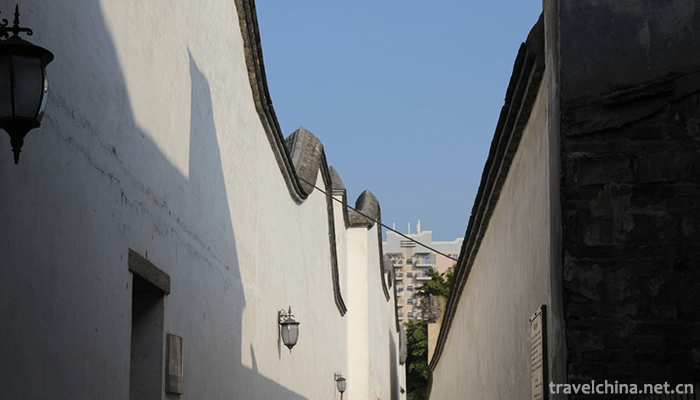
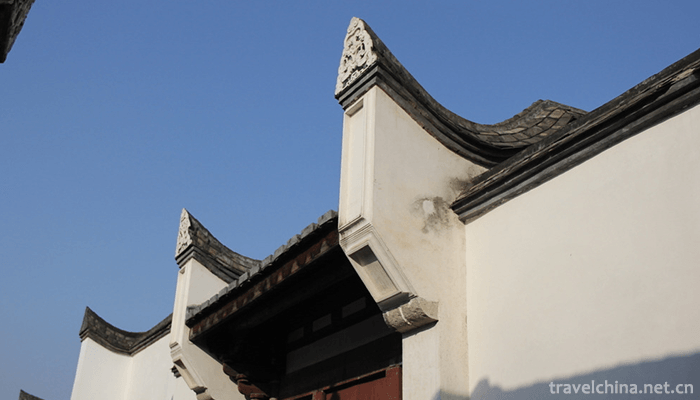
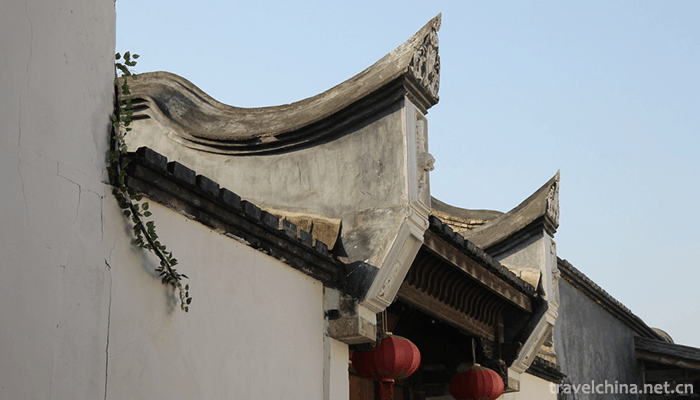
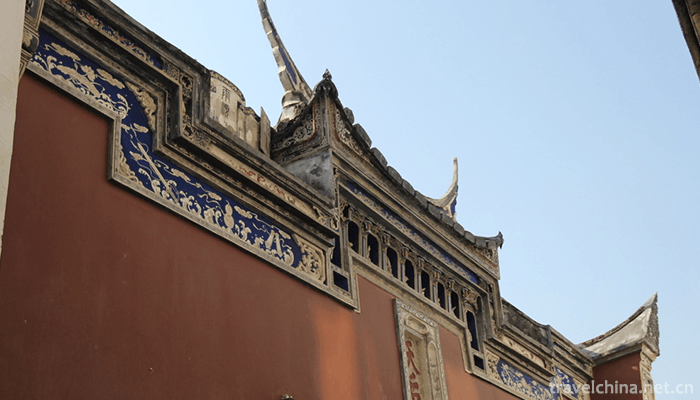
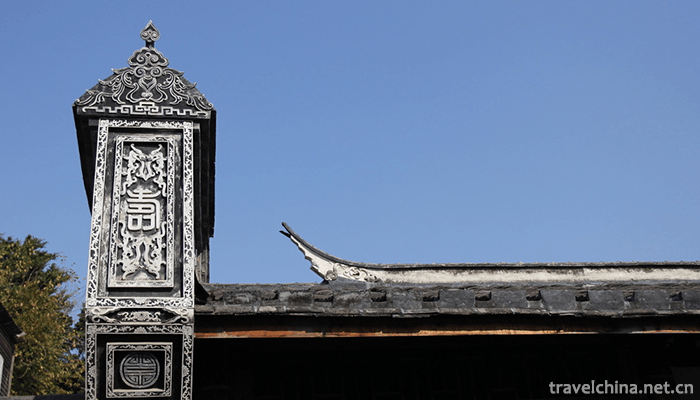
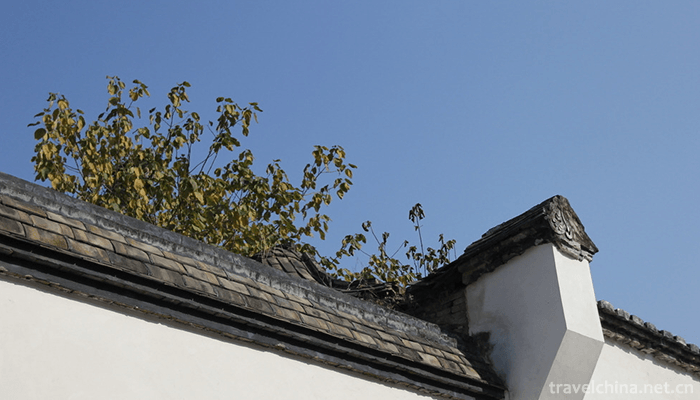
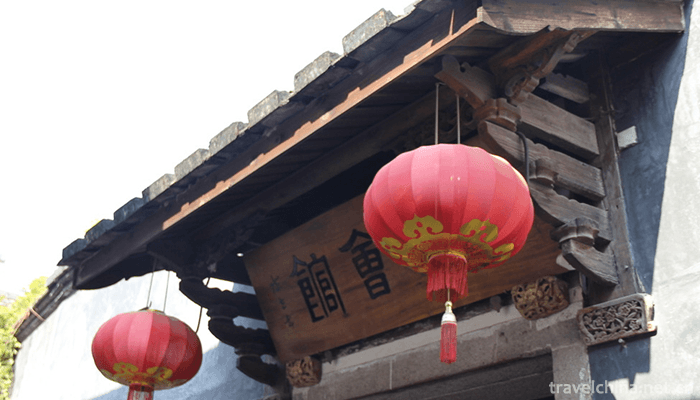
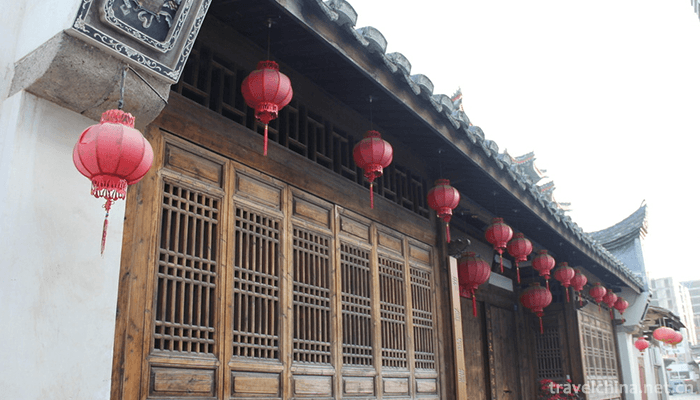
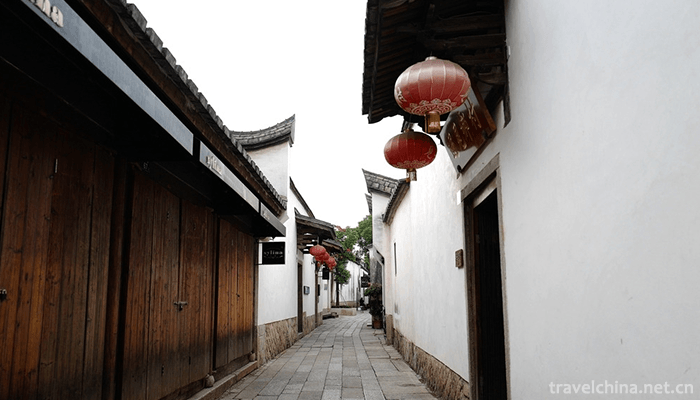
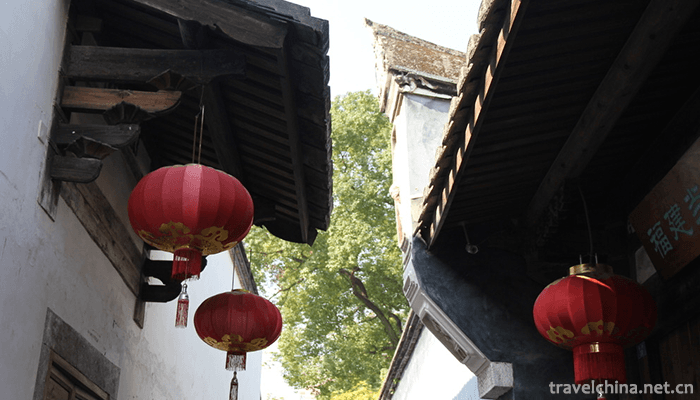
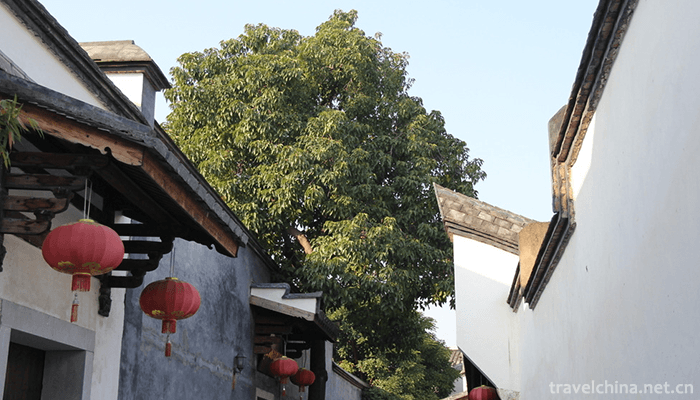
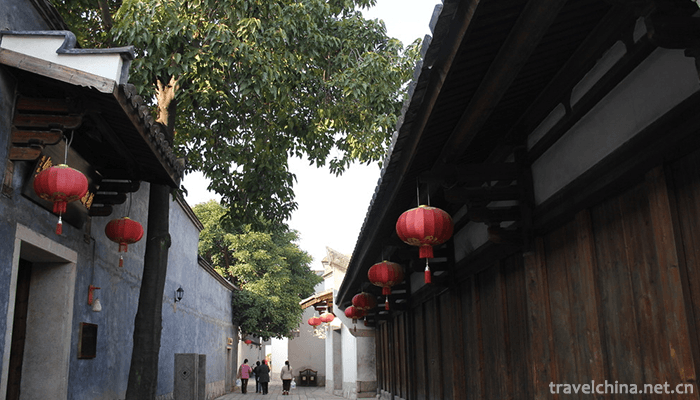
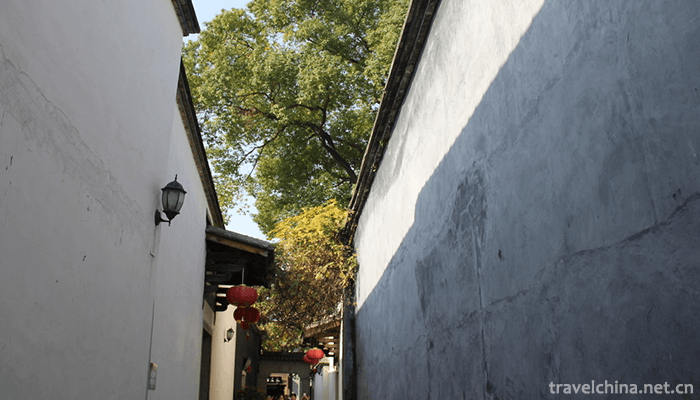
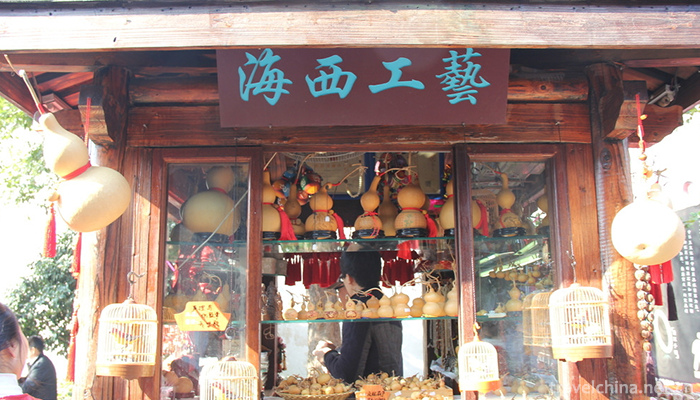

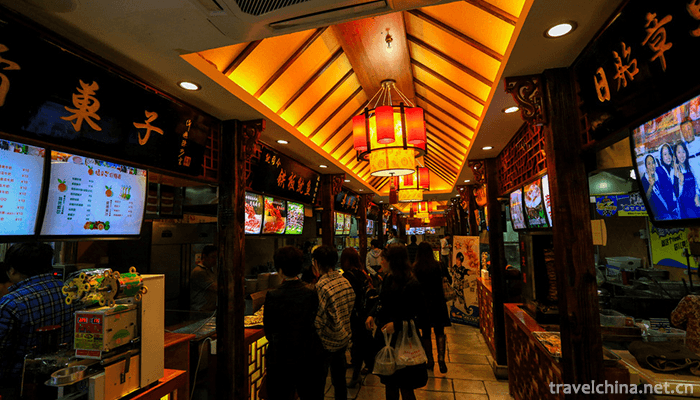
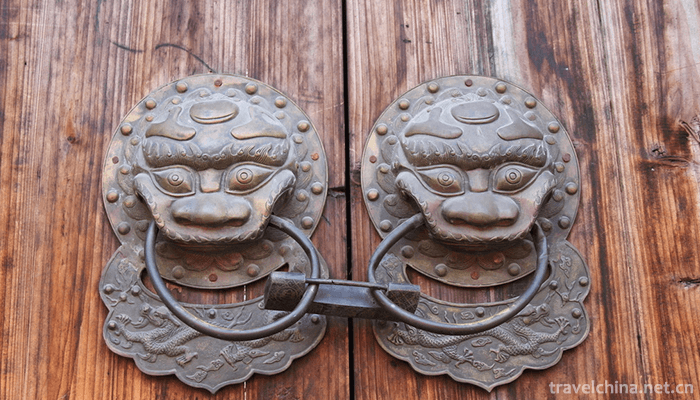
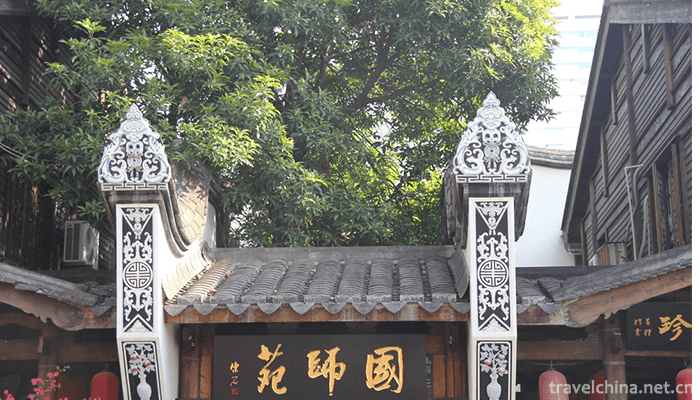
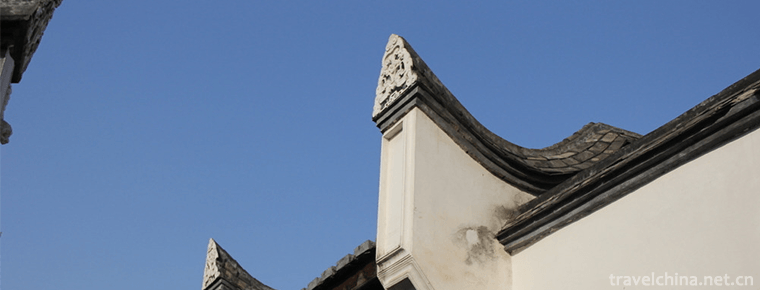
Three Lanes and Seven Alleys
-
Jinli Street
Address:No. 231, Wuhou Temple street, Chengdu, Sichuan,China
Views: 160 Time 2018-09-29 -
Braised Shredded Chicken with Ham and Dried Tofu
Braised Shredded Chicken with Ham and Dried Tofu, also known as chicken juice, boiled silk, the traditional dishes are Huaiyang cuisine
Views: 225 Time 2018-10-27 -
Wanxiang Karst Cave
Vientiane Cave, the national AAAA-level tourist attractions, provincial geological parks, provincial scenic spots and provincial cultural relics protection units
Views: 148 Time 2018-12-17 -
Guanmenshan National Forest Park
Guanmenshan National Forest Park is located 70 kilometers southeast of Benxi City. The Forest Park covers an area of 3517 hectares, with an altitude of 310-1234 meters and a forest coverage
Views: 183 Time 2018-12-24 -
Tianjin Italian Style Area
Tianjin Italian Style Area is located in Hebei District of Tianjin City. It is a quadrangular area surrounded by Wujing Road, Boai Road, Shengli Road and Jianguo Road in Hebei District. There are near
Views: 167 Time 2019-02-21 -
The Dai Garden of Xishuangbanna
The Dai Garden is called Xishuangbanna Dai Garden. Located in Xishuangbanna Olive Dam, Yunnan Province, China. There are five Dai Natural Villages with the best preservation in China
Views: 192 Time 2019-02-25 -
Winter capture of Chagan Lake
Winter fishing in Chagan Lake, namely ice and snow fishing (or hunting) in Chagan Lake in winter, is a traditional fishery production mode (custom) in Qianguoerros Mongolian Autonomous County
Views: 197 Time 2019-04-15 -
Pig Iron Smelting and Casting Technology
Yangcheng pig iron casting technology was invented in the 6th century BC. Yangcheng pig iron smelting and casting technology in the smelting and casting process first crushed the ore, then roasted at
Views: 306 Time 2019-06-14 -
Suqiao Flying Fork Club
Suqiao Flying Fork Club, also known as Yun Fork Club, is a local traditional acrobatics performance popular in Wen'an County, Hebei Province. The performances mainly consist of ancient forks, drums, c
Views: 350 Time 2019-06-17 -
Craftsmanship of Fireworks and Firecrackers
China is the first country to invent gunpowder in the world. Fireworks and firecrackers made of gunpowder also have a long history and enjoy a high reputation in the world. The record of firecrackers
Views: 149 Time 2019-07-10 -
Yongnian Western Dialect
Yongnian Western Dialogue is an independent drama formed after Shangdang Bangzi of Shanxi was introduced into Yongnian. During the period of Xianfeng in Qing Dynasty, Shangdang Bangzi was introduced i
Views: 187 Time 2019-07-14 -
Introduction to Panzhihua
Panzhihua, a prefecture level city of Sichuan Province, is located in the southernmost end of Sichuan Province, 614 km away from Chengdu in the north, 273 km from Kunming in the South and Lijiang and Dali in the West; it is located in the central and southern section of Panxi Rift
Views: 666 Time 2020-12-14
